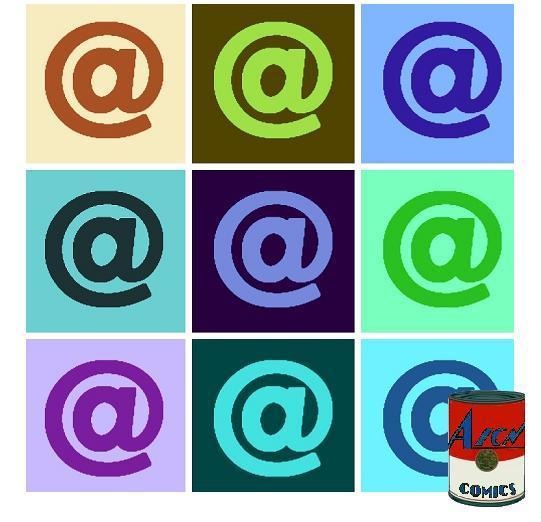
(Click title to go directly to the review)
SECRET WARS #9
THE FLASH VOL.6
Indie Jones presents NEROY SPHYNX: BACK IN THE GAME OGN
SUPERMAN: AMERICAN ALIEN #3
AVENGERS #3
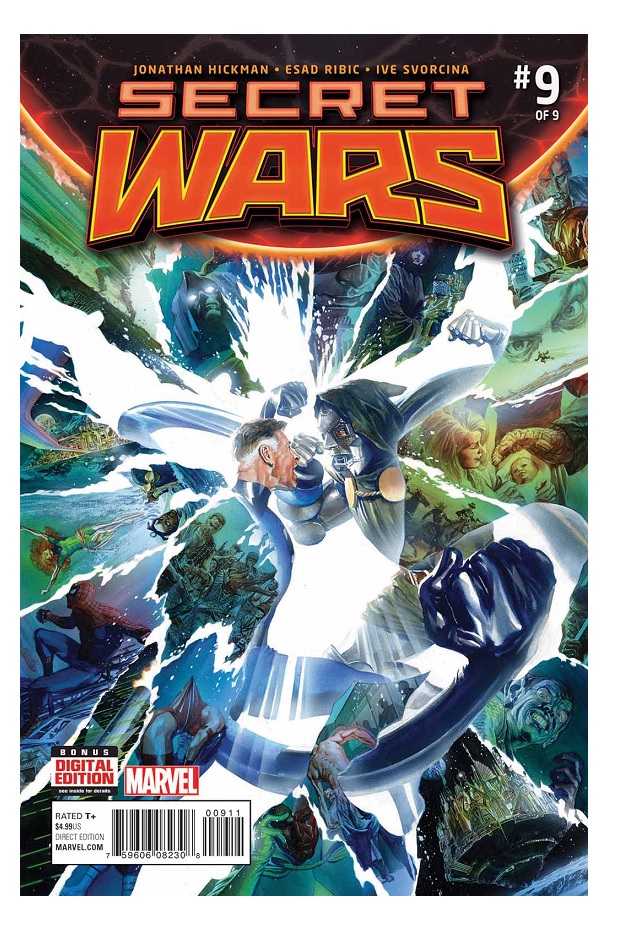
SECRET WARS #9
Writer: Jonathan HickmanArtist: Esad Ribic
Publisher: Marvel Comics
Reviewer: Masked Man
Ok, now SECRET WARS is over (which was actually the third secret wars (by Marvel count) as they now get ready for the second civil war- oui). First, I’ll give ya the spoilers related to the relaunch of the All-New All-Different Marvel Universe that the SECRET WARS was kicking off: Pretty much nothing. There’s nearly no reason to read this final issue before all the relaunch issues, aside from being in chronological order.
And speaking of chronological, I’ll just recap the issue before I get to the relaunch part: For once the awesome cover by Alex Ross reflects the story inside, as Dr. Doom and Mr. Fantastic battle it out for the universe! Before that, Doom has to deal with Namor (not really) and the Black Panther with the Infinity Gauntlet. It’s a macho and meta slugfest as Doom remains the Lord and God of Battle World. Meanwhile Sue Richards is treated like dirt, not remembering anything about Reed, and then not understanding the ending of the story, either (for someone who was supposed to be a great writer on Fantastic Four, I was surprised by this). Anyway, the Maker (Reed Richards from the Ultimate Earth) and Mr. Fantastic meet up with Doom’s power source, The Molecule Man. Soon Doom realizes he’s just being distracted by the Black Panther, and shows up in time for the final showdown with Mr. Fantastic; the Molecule Man acts as referee. As for the Maker, well that would be too many spoilers, I guess. In a bare-knuckle showdown, Mr. Fantastic gets Doom to admit he would have done a better job saving the universe than Doom did (seriously Doom, Battle World?!?). The Molecule Man agrees and Mr. Fantastic becomes the new Lord and God of the universe, who with the help of his kids rebuilds the universe--all of them (did ya get that?). We then have four epilogs to lead us into the All-New All-Different Marvel Universe. 1: The Black Panther cheats and goes back in time, before all this, to Wakanda, and does something I don’t understand, and since Hickman hates giving his story any context, I guess I’m just $hit out of luck (despite all I’ve read). 2: Because Miles Morales gave the Molecule Man a hamburger, he brings him to Marvel Earth-Prime, and his mother is still alive. 3: The Storm family decides they want to go exploring this new multiverse they just created (And Marvel no longer has to suffer the indignity publishing a comic book of 20th Century Fox characters). 4: To show that Reed is the bigger man, he returns Dr. Doom to Latveria with a fixed face.
So yeah, not much is changed or set up by SECRET WARS. In fact, it seems like none of the Marvel Universes have been destroyed, so the Ultimate Universe is still there (which makes you wonder why Miles Morales is ‘here’)! While I assumed this Marvel Universe relaunch wasn’t going to be like DC’s CRISIS ON INFINITE EARTHS, I did figure is would be like DC’s ZERO HOUR, but turns out it was more like DC’s CONVERGENCE, which they claim fixes everything by apparently doing nothing at all.
OK, let’s talk about the story itself. As it all came down to the wire, Hickman clearly does not fumble the ball here. But the flaws in the story do prevent it from being the story I think he wanted to be. As the climax shows, this was supposed to be a Doom vs. Reed story, with the Marvel U. hanging in the balance. But neglecting Reed for nearly the entire series really undermines the climax. And while Hickman spent a ton of time explaining the different kingdoms of Battle World and how Doom governs them, he barely spent anytime explaining how it all works: the Dr. Strange/Dr. Doom/Molecule Man partnership, again undermining the climax (as it is I get it, because Molecule Man said so). Hickman also makes a point in this issue stating that this was all a giant plan by Reed to take Doom down, but we never saw any of it coming together under Reed, which, yet again, undermines the climax. Instead of giving us a well-structured story with a clear focus, Hickman relied too much on cool factor and brief descriptions. So yes, every thing was very cool and epic. The ending (for the most part) makes sense. And Esad Ribic, with colorist Ive Svorcina, made each page equally awesome and epic. And let’s hear it for everyone involved that no fill-in artists were needed. So it’s a good mega-crossover event, but not really one for the ages. Which is sad because Hickman was so close to doing one.
Now, if I take into account how long Hickman and Marvel were setting this up—well, that just depresses me, bBecause I still don’t fully understand what the Beyonders were doing, how Strange/Doom/Molecule beat them, and what has happened to all this unlimited power. It’s not like they had to knock this out in an afternoon, they had fricken years!
But at the end of the day, this is a good romp with all the Marvel superheroes, and that is all we really want in a mega-crossover event. So on the Masked Man’s scale of Crap, Poor, Decent, Good, and Great: SECRET WARS scores a GOOD.

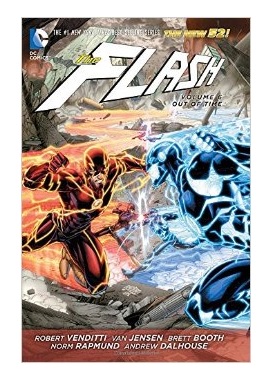
THE FLASH VOL. 6: Out of Time
Writer(s): Robert Venditti and Van JensenArtist(s): Brett Booth and Norm Rapmund
Publisher: DC Comics
Reviewer: Humphrey Lee
I’ve been becoming a bit more of a Trade Paperback (TPB) glutton the past few months than ever before. Mind you, if you ever want to see consumerism at its most horrific, I’m sure I’ve got photographic proof up on my social media pages featuring nearly a thousand graphic novels, oversized hardcovers, etc. But as the price and volume of comics continues to go up, it becomes harder and harder for a man such as myself, who supposedly has his finger on the pulse of the industry (or at least puts on a good show of it), to keep up with books as they come out, and twenty-two long boxes and growing of stuff which he’s already taken the heart rate. So where does that put us and why am I prefacing this column with yet more anecdotal BS? It puts us at my having spent plenty of Christmas dinero taking advantage of some Barnes & Noble buy two, get one free sales, realizing managing several hundred TPB volumes can sometimes be as tedious as managing long boxes, and that the way DC manages their trade collections is pretty fucking horrendous.
“Horrendous” may be going on a little strong because in a couple ways – namely price and continuity – but their insistence on selling hardcover first before getting to these softcover versions for those who move to trades to save a couple bucks, is doing a disservice to everyone. The reason that Image Comics has become such a prime market percentage gainer, besides just the quality of product and a certain zombie property of high popularity bringing them attention, is that they get their product out in collected editions within a super quick turnaround margin so that readers do not feel like they are missing out or falling behind on books. Not only are DC hardcover collections coming out four to six months after the material they collect, but these softcovers also come out another four to six after the HCs, meaning the material I’m about to critique here shortly (honest!) is basically a year old to the day. That means a lot of the framework for this story – a Central City recovering from the actions of the Crime Syndicate in the “Forever Evil” crossover of 2014 – is material pushing two years old, which is kind of insane. Now, in the grand scheme of things, someone buying Flash trades a couple years down the line is not going to care about timeliness, but for someone like myself with more and more diminishing interest in the publishing lines of the Big Two (because it is not just DC who has reproduction foibles such as this, and Marvel’s comes complete with terrible pricing as well) any foothold to stay somewhat current would be kind of nice, but it is not to be found following these books in TPB form, and that just seems like terrible business.
As for the actual content of this actually very well-priced volume (there’s about $28 worth of material reprinted here at a $16.99 price tag), this edition represented a changing of the creative guard from the Brian Buccellato/Francis Manapul tandem that kicked off the New 52verse into the Venditti/Jensen/Booth team noted here. The immediate takeaway is that I feel like the yarn being scripted here seems a bit more organic and focused than the New 52 material before it. Not to downplay what went down was presented before this volume, overall it was very solid material that looked sublime, but it was very flighty with its threads, with actions or reveals that kind of materialized out of nowhere. Van Jensen and Venditti wrap this storyline a bit tighter around some fallout in Barry’s life that winds up having ramifications for years down the line. At first it’s just some little things: Barry’s uphill battle in reclaiming his life after being missing in action for a bit and pronounced dead, Iris West coming to him for his aid in helping to temper her young nephew Wally, and some good old forensic sciencing with a murder mystery involving various powers of villains that could not have actually committed them. Wrap this around some odd fluctuations in the Speed Force that grow exponentially into disasters The Flash failed to prevent and you have a full-on crisis of Scarlet Speedster proportions.
All of that right there also seems like it could be a little on the overwhelming and unfocused side, but it all comes together rather nicely, to be honest. VJ/Venditti do well to build on the out of control personal life of Barry as he reintegrates with work, owns up to his not finding enough time for girlfriend/lab mate Patty, and then being tasked with trying to stop young Wally from idolizing his uncle Daniel, who was responsible for most of the havoc wreaked on Central City and the Speed Force in the previous story arcs. So I would actually argue it shows pretty exemplary focus in taking thirty issues worth of previous story and tying them together with a plot of Barry starting to lose time as he uses his superspeed, to the point where everything in his life goes so far off kilter as the years go on that a future version of the Flash would become so desperate and deranged he would travel into the past to right these wrongs in both extreme and sentimental manners. It does move a little fast – yes, even for a story about the fastest man alive – even though this arc takes over eight issue to play out, but it does hit a lot of the personal and physics-warping notes you want out of a book about the fastest man alive -- though, admittedly, the time-correcting theme of the book falls apart when you really think about its nature and what future Barry is doing as he works his way backwards, but all the fun and excitement is still there and undiminished.
Artistically, Brett Booth takes the majority of the pencil work here and holds up remarkably considering the sheer visual splendor he was following in the form of Francis Manapul. I know that sounds almost like a gentle let down, but you almost have to have some sort of disclaimer when it comes to following what Manapul did. That shit he was tossing about for most of the first thirty issues of this title was Ziggy Stardust, man, and once it was gone the world felt less fantastic. Booth himself has a very dynamic style that fits in damn well with the aesthetic you want from a FLASH book. His art really likes to drive through the panels and play fast and loose with the page layouts, giving a lot of tonality to the book. When things kick into high gear you can almost feel things get more kinetic as the screens overlap and the flow of everything shifts. Things are a bit more exaggerated and cartoonish under Booth’s pencil tip, but isn’t that fitting for a man who can cross the globe in the time it takes a dime to drop?
Don’t let my opening derision of publishing policy by DC fool you; this is some darn solid comic material here, and has been for six volumes now. My problem is that for people wanting to stay somewhat up to date on Flash material but not wanting to pay ballooningly extravagant singles prices or the premium for the hardcover, being told to wait a year from the original and six months from the first collection seems kind of, well, dumb. And I know it has basically been Big Two policy for years now, but until now and my recent conversion, I never really noticed how long these needless gaps took not just from story arc end to hardcover but from that to the softcover. At the least it shows short-sightedness in growing an audience, and at the most it seems kind of petty and punishing towards people who want to get the cheapest collection they can get and making them watch for several months for the next TPB to hit while the next volume sits there on the shelf at a significantly higher markup. And the real shame of it comes in that this first volume by all the new creative talent involved and shows a good grasp of the character and a building off of the material that came before them. I’m looking forward to seeing what these folks do as they start to fully own the character and take him more in their direction, even if it’ll take an extra six months to find out.
Humphrey Lee has been an avid comic book reader going on fifteen years now and a contributor to Ain't It Cool comics for quite a few as well. In fact, reading comics is about all he does in his free time and where all the money from his day job wages goes to - funding his comic book habit so he can talk about them to you, our loyal readers (lucky you). He's a bit of a social networking whore, so you can find him all over the Interwebs on sites like Twitter, The MySpaces, Facebookand a blog where he also mostly talks about comics with his free time because he hasn't the slightest semblance of a life. Sad but true, and he gladly encourages you to add, read, and comment as you will.
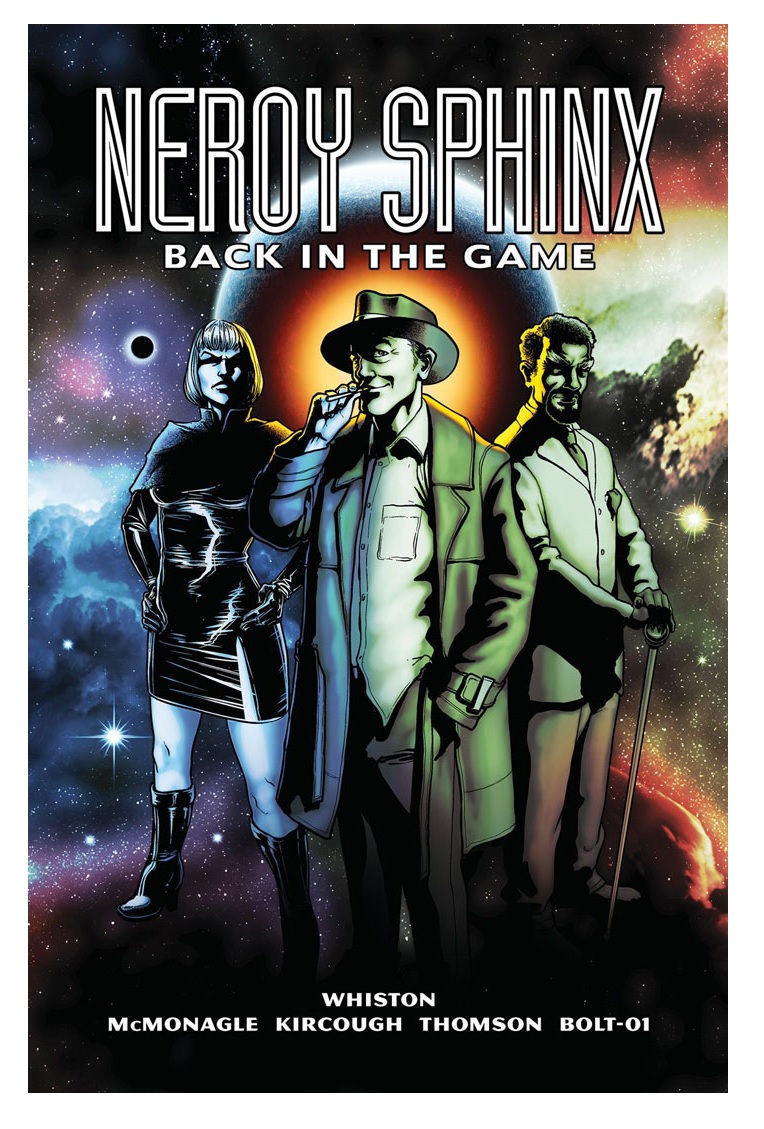

NEROY SPHINX: BACK IN THE GAME Original Graphic Novel
Writer: Daniel WhistonArtist: Johnny McMonagle, James Kircough, Dave Thomson
Publisher: Future Quake Press
Reviewer: Lyzard
NEROY SPHINX: BACK IN THE GAME is a cocktail made with science fiction, a touch of heist, and garnished with a sly twist. When a conniving and devious swindler needs help, there aren’t too many safe places to turn to. But with Neroy Sphinx’s memories stolen, and a dangerous secret lost with them, trusting the very friends he has hurt in the past might be his only option. What could be more dangerous: putting your life in the hands of those just as immoral as you, or putting the galaxy in danger?
Daniel Whiston describes the graphic novel as “OCEAN’S 11 a few hundred years in the future, set against a dystopian backdrop with a hint of BABYLON 5.” I would say that there is more than just a hint, but let me digress on that issue for a bit and focus your attention on the balance between the comic’s two main genres. NEROY SPHINX, like its namesake protagonist, plays on misdirection. A majority of the storylines open up with a familiar sci fi premise before revealing their more criminal caper-like qualities.
When I think caper fiction, I am reminded of pulp fiction. When I’m reminded of pulp fiction, I think Tarantino, then noir. And when I think noir, I see black and white. I am not here to say that sci fi cannot be achieved in the realm of black and white, but without the element of color, NEROY SPHINX lacks that illusory quality commonly associated with futurism. Perhaps it was a stylistic choice to steer away from those eerie blues and greens rather than have them overshadow the comic’s other genre at play, but more often than not it left me wanting to grab a box of colored pencils and play paint by numbers. The graphic novel features the work of three artists: Johnny McMonagle, James Kircough, and Dave Thomson.
While the style changes a few times from entry to entry, their characterization of Neroy Sphinx is much more consistent than its one writer. Whiston’s stories lack consistency. Whether it be confusion caused by technobabble in one tale or convoluted intrigue in another, it would have been easier for me to believe that SPHINX has more than one writer than it did more than one artist. Again, creative intention may come into play here. The overarching plot does not take place chronologically, so there is room to argue change in the writer’s voice based on that fact. I believe that Whiston is just more in his element when straying away from standard sci fi narrative convention and staying within the confines of this hybrid genre. It is, in fact, this blend of tones that I find most appealing about NEROY SPHINX. The comic slides into a unique niche of mystery crime sci fi that feels wholly unique. It isn’t as dark or gritty as DO ANDROIDS DREAM OF ELECTRIC SHEEP?, but also not as bonkers as Douglas Adams’ DIRK GENTLY'S HOLISTIC DETECTIVE AGENCY.
As for the amount of allusion featured in NEROY SPHINX: it is all too easy to read a comic by an independent writer and to think his work to be only homage. That was indeed my first impression of NEROY SPHINX…until I read the original release date. The content for BACK IN THE GAME was released as far back as ten years ago, preceding many of the sci fi allusions that I presumptuously assumed the concepts were taken from. While there are indeed many nods to the great masters of the genre, reading NEROY SPHINX in this context, with an understanding of how it is much older than it initially appears, hopefully assuages any outcry of “hack”.
NEROY SPHINX attempts to balance not only referential reverence with innovative idea, but also the fantastical realm of science fiction with the intrigue of a crime mystery. Even the latter teeters along the line between a more devious hard-boiled style versus a wilier caper tone. Add in the visual juxtapositions at play and you can guess what NEROY SPHINX’s ultimate issue is. Not every thread within BACK IN THE GAME reaches equilibrium between all of these opposing forces, but just enough plotlines hold steady to make this worth a read for fans with more literary versus cinematic sci fi leanings.
Lyzard is Lyz Reblin, a graduate student at the University of Texas pursuing a master's degree in Media Studies... which is just a fancy way of saying she plays a lot video games, watches far too many horror films, and then tries to pass it all off as "research."
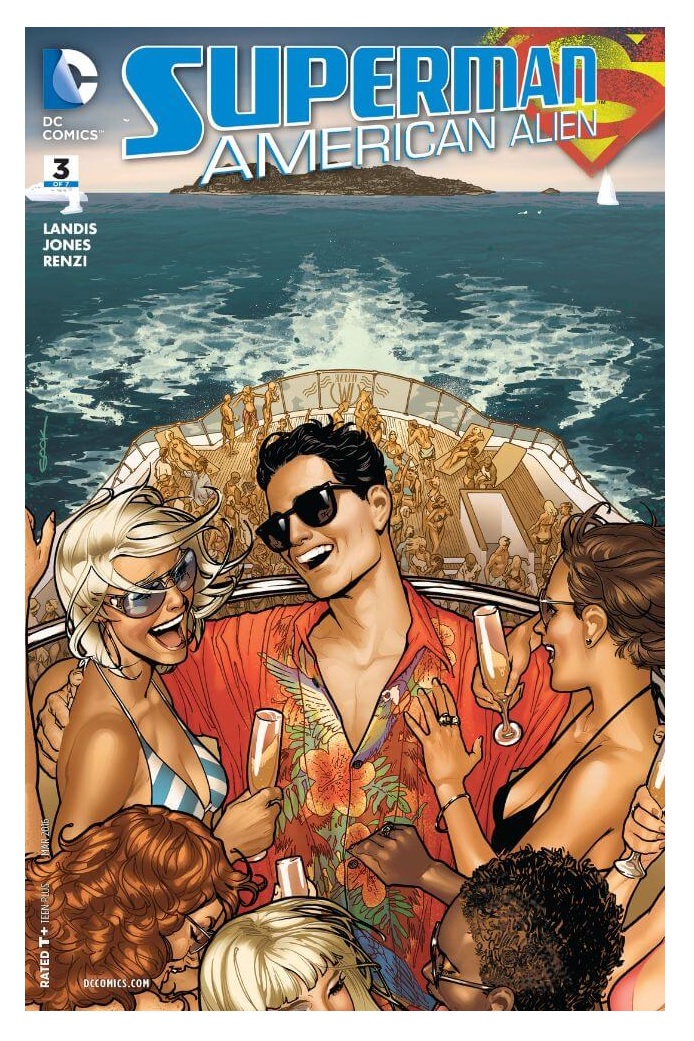
SUPERMAN: AMERICAN ALIEN #3
Writer: Max LandisArt: Joelle Jones
Publisher: DC Comics
Reviewer: lionel.putz@gmail.com
Three issues in and I remain completely enthused by Max Landis’ take on Clark Kent, an imaginative, humanizing retelling of the iconic character’s origin story through a series of vignettes from seven select days in the Man of Steel’s formative years (the first of which I recommended back in November). I regret not reviewing issue #2 of the series, a brutal noir tale of Clark Kent taking on a small-time robber who killed some Smallville residents in the town gas station. It was notable for its use of somewhat graphic violence (in stark contrast to the first and third issues) to inform the call to action Clark feels every time he sees an atrocity, but also for the small details, including confirmation of my suspicion that in this updated origin, the people of Smallville aren’t stupid. They may not know the exact nature of Clark’s lineage, but they know he’s different, and they protect him and occasionally rely on him as they would any other indispensable community member.
With that in mind, this third issue presents us with a college-aged Clark Kent, albeit one who has never left Smallville (he flew to California once, but turned around and went home without ever landing) as he indulges his good luck at having won a free trip to the Caribbean. After some ribbing from best friend Pete Ross about how he could’ve gone anytime, Clark is off and almost immediately finds himself crashing into the ocean, along with a pilot and his small, failing aircraft. A nearby yacht picks up Clark and the pilot he’s just saved and welcomes him to a raging party scene full of wealthy, young, beautiful, inebriated people (including “Ollie” Queen, “Vic” Zsasz and his wife, and Sue Dibny, among others), all excited to congratulate him on his amazing entrance. It’s classic Bruce Wayne, you see, and they’re thrilled to see he (“Bruce”) made it to his own 21st birthday party, as he never comes to these events--thus setting the stage for an amusing case of mistaken identity and an interesting new take on the future Batman/Superman relationship.
A confused Clark tries to correct a few people (none of these people have seen Bruce since he was twelve, but are all too shallow or insecure to admit they have no idea what he looks like), all of whom laugh off or outright ignore his continued attempts to get a word in. Suddenly he’s whisked below deck by a young Barbara Minerva, the future Wonder Woman antagonist/sometimes ally Cheetah, who at this point is nothing more than a restless jet-setter dreaming of bigger days (“I think I want to be an archeologist”, she tells Clark in a nod to her future persona). They share a night of passion before a familiar mercenary drugs and then attempts to eliminate “Bruce Wayne” before the now heavily intoxicated Clark dispenses with him in hilarious fashion. The book closes with a check-in on a familiar figure in a faraway land, for the first time hinting at potential direct continuity between the current issue and the next.
This book continues to do an amazing job of digging deeper into the layered emotions that any small-town boy would feel growing up—isolated, confused, unsure of his place in the world—but as amplified by Clark’s unparalleled abilities. The Kents portrayed in this book continue to be hip and progressive while not at all betraying the traditional earnestness with which they’ve always been imbued. In this issue, we see Jonathan pull Clark aside and remind him to “be safe” (in quotes in his dialogue bubble, mind you), a nod to his age and raging hormones, not his powers. It’s not a revolutionary moment in a comic book published in 2016 by any stretch (in fact, it’s just solid parenting), but it is probably the first time we’ve seen something like it from Pa Kent in a Superman book.
Each issue of this book has been its own self-contained story (always with an interesting one page bonus “story” at the end), and each has featured a markedly different tone, one highlighted by a rotating cast of talented artists. It’s such a fascinating read that I plan to review the remainder of the series, and I genuinely hope that you all will check it out. I truly never thought I would have this level of enthusiasm for a Superman story, but I’m fully on board. Max Landis is right: you should love Superman.
Lionel Putz is a lawyer by day. He watched “Matlock” in a bar last night; the sound wasn't on, but he's pretty sure he got the gist of it. Email him at lionel.putz@gmail.com
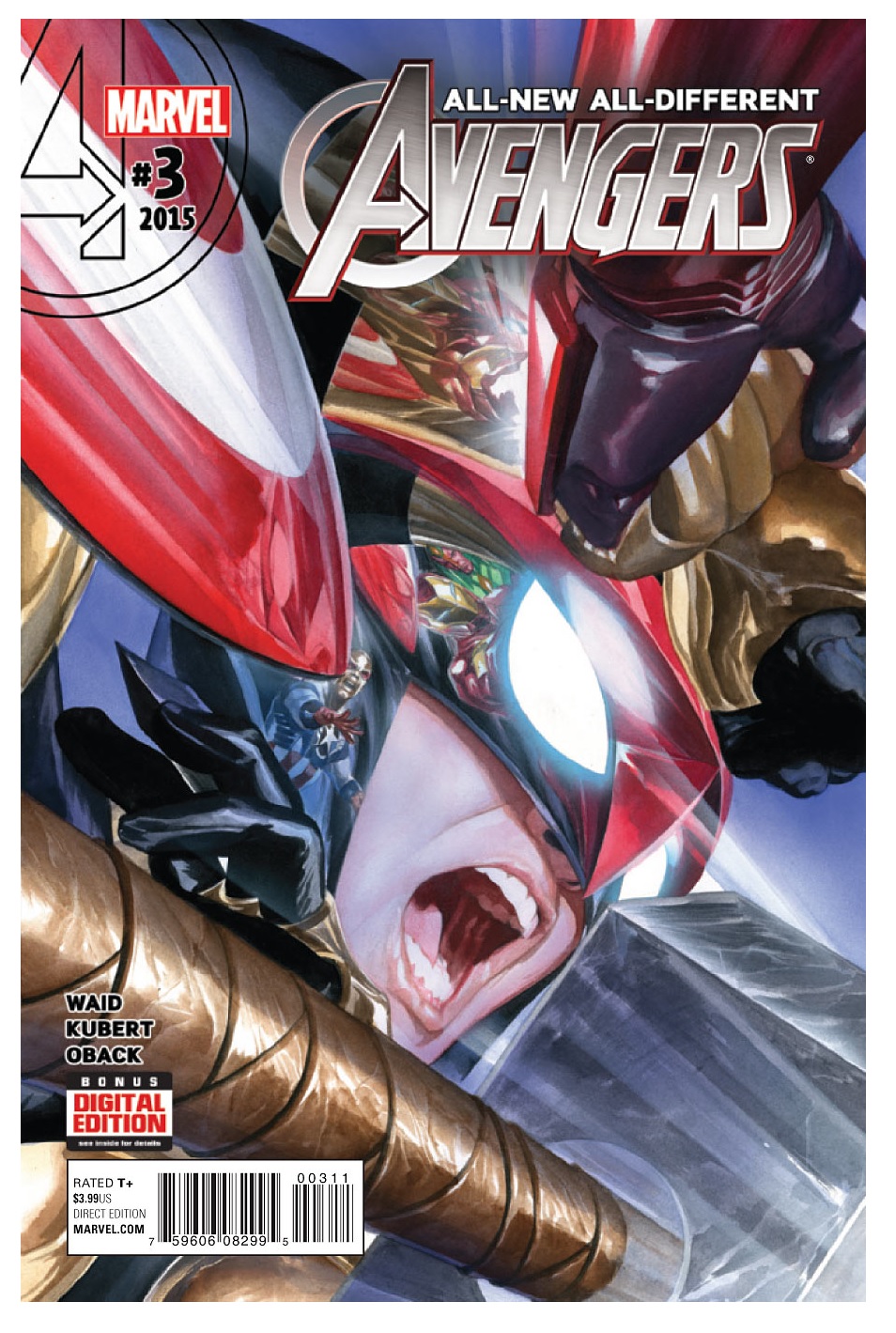
AVENGERS #3
Writer: Mark WaidArtist: Adam Kubert
Publisher: Marvel Comics
Reviewer: Masked Man
Every so often I lament the fact that comic book stories are becoming way too long (for lots of reasons and lots of bad effects). Then Mark Waid comes along, and relaunches The Avengers in just a three issue story arc--what the hell?!? Has he lost his mind?! ?Does he want to get fired?!? Oh and thanks, Mark--that was really cool of you. Because as nice as these first three issues were, I really wasn’t looking forward to a six issue (plus?) story arc of some random Chitauri warrior running around.
But while the story arc is over, the story (as it were) is not. The mysterious Gryphon, who was helping Warbringer, is still at large, and The Avengers still don’t even know he exists. Damn, I miss writing like this. It’s like watching a good comedy sketch hit its joke and stop instead of beating it into the ground like Saturday Night Live often does. Plus Waid lets us know what we are in for if we stick around? Will do.
To get into the spoilers, the Chitauri warrior Warbringer, aided by Gryphon, gets ready to open a portal to his universe so Chitauri can finally teach Earth a lesson. In typical fun superhero action, Iron Man, Nova and Spider-Man save the day. Then Warbringer learns that Gryphon was really just screwing him into the ground, though far too late for him to do anything about it. Then, of course, the collected heroes decided they should, in fact, become The Avengers. Then it’s curveball time (too many thens?), the thing Waid was doing so well in DAREDEVIL. Big spoiler, so stop reading now: young naïve Nova feels guilty that Warbringer started all this mess to get back at him. The Vision finds out as Nova tries to hide it from The Avengers. Then The Vision, who has been playing around with his programing, helps Nova keep the secret, but then declares Nova is now in his debt--say what?!? Well, that can’t be good…
So a good solid superhero tale, peppered with clever and entertaining superhero interaction. All the stuff we want in a good team book. Waid does a nice job showing us the uneasiness of these characters working together for the first time while still showing their individual confidence as successful superheroes. Really nothing to hate here. Adam Kubert’s art is nearly the same: nothing to hate, but then, nothing to really love, either. He gets the job done, period. It’s kinda weird that Marvel would kick off the AVENGERS with such a lackluster artist.
Of all the ALL-NEW ALL-DIFFERENT Marvel comics I’ve tried out, this is the only one I’m keeping, mainly because it actually feels like I’m reading about these characters and not some new flavor of the month version.
Proofs, co-edits & common sense provided by Sleazy G
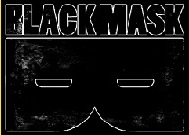 The next level of comic book excellence is a click away at BLACK MASK STUDIOS!
The next level of comic book excellence is a click away at BLACK MASK STUDIOS! Want more in all things Geek?
Want more in all things Geek?Check out our friends at PoptardsGo for podcasts, reviews, and more!
 And if you still need more geek in your life, check out Part-Time Fanboy for more geeky goodness on comics, movies, and more!
And if you still need more geek in your life, check out Part-Time Fanboy for more geeky goodness on comics, movies, and more!Finally, check out AICN COMICS on Facebook and Comixpedia!
